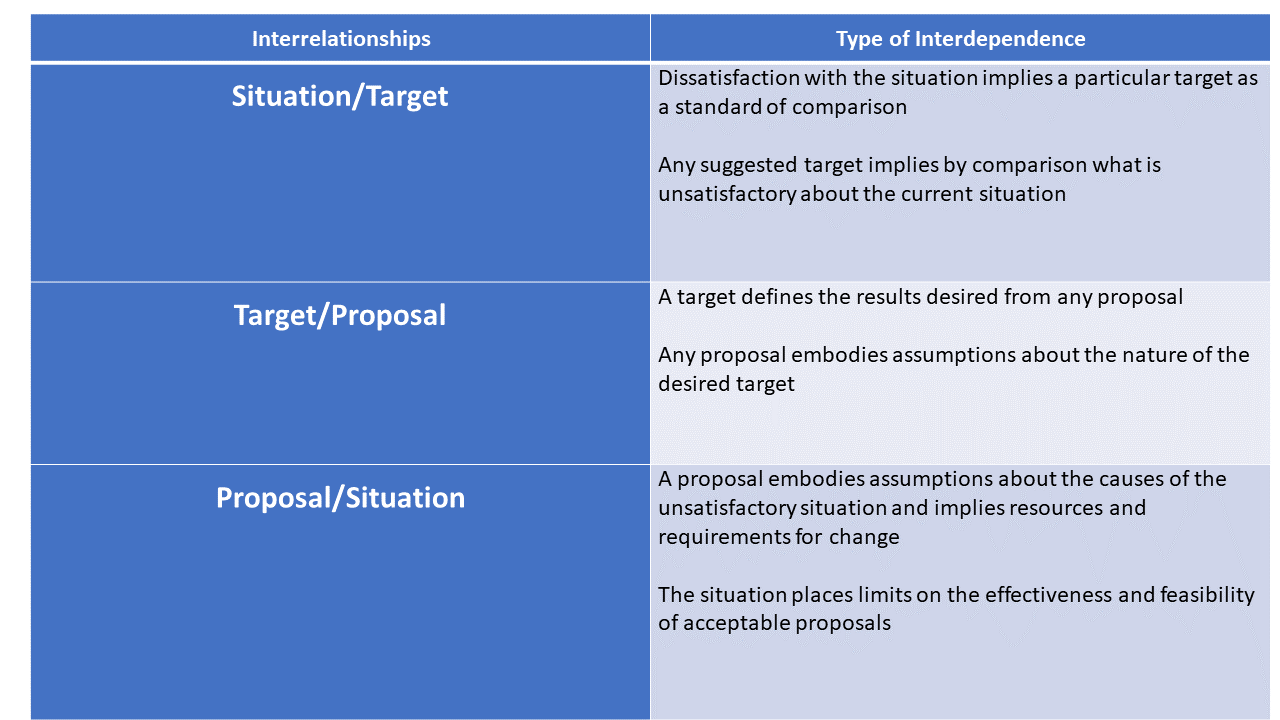
In solving a problem, we must do more than just prevent the recurrence of the undesirable symptoms. The nature and scope of a problem are not fully appreciated until two distinct, but related, sets of information have been made explicit: (1) the relevant characteristics of the current condition, and (2) the key characteristics of the desired condition. The solution of a problem involves taking action that will change the current conditions into the more desired alternative.
The Situation-Target-Proposal (STP) Model
The STP Model is a method of organizing information to define a problem and to resolve or manage conflict that occurs in creating a solution. Information is organized into three interrelated dimensions.
The Situation (S) Dimension: Information about the essential features of the current state.
The Target (T) Dimension: The desired state. What we want to accomplish and to avoid. Targets are chosen because those working on the problem value and desire them.
The Proposal (P) Dimension: Specific action proposals aimed at changing the current state into the desired state.
Situation, target, and proposal not only define the three elements of effective problem solving but also link directly with the three domains that provide the conceptual basis for this book: information, intentions, and ideas.
Problem analyzing and problem solving may at times move from target to situation to proposal. Because these three dimensions are not independent of one another, however, problem analysis and problem solving are best thought of not as a movement from one dimension to another but rather as an interaction among all three (see Chart).
Chart: Interdependence Between STP
Because these three dimensions are so clearly interrelated, it is helpful to think of them as a single interacting unit rather than as three separate factors related to one another in a linear sequence. This interrelationship also suggests that all three dimensions should be addressed at the same time rather than one at a time. One should be free to address the problem openly and spontaneously, to generate and develop information about each dimension as appropriate. In other words, the form in which the information will be organized need not dictate the form of the inquiry itself. Exploration of the problem can be spontaneous although the information that is generated should be recorded in three separate columns if working alone or on three separate sheets of newsprint if working in a group. Entries can be made in the appropriate category as they occur and are accepted.









